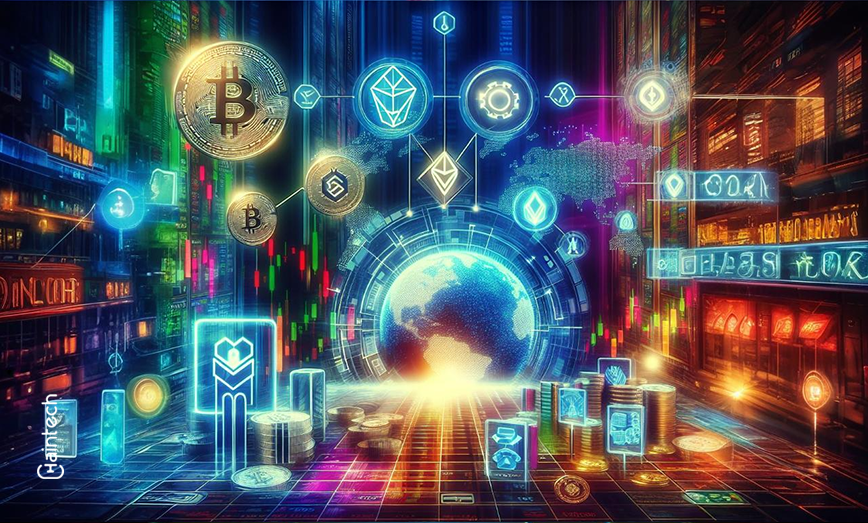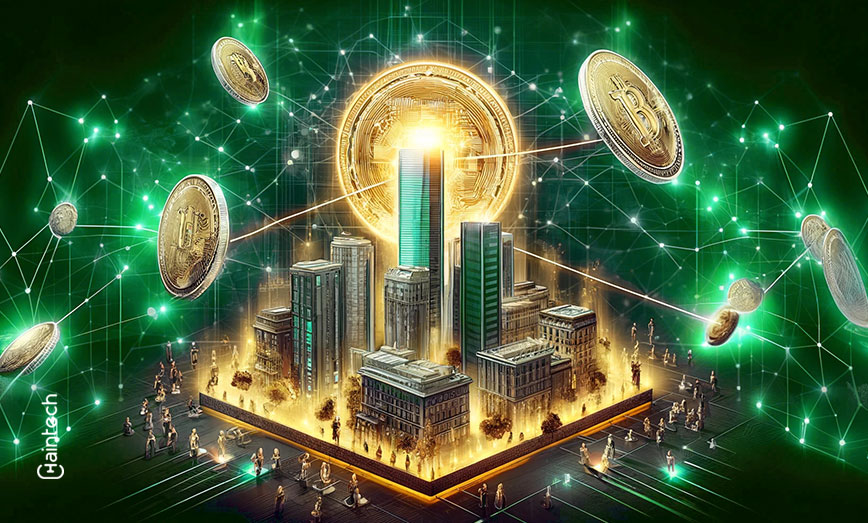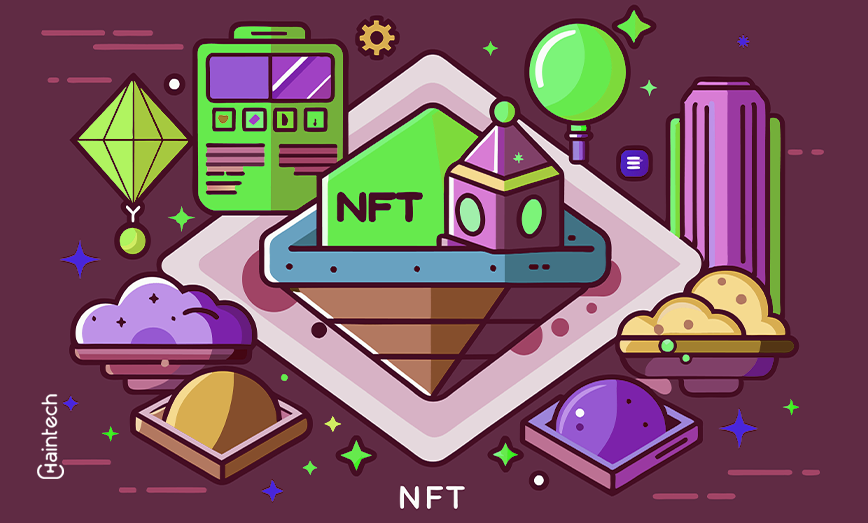Traditional Securities vs. Tokenization: The Shift to Digital Assets in Investment

Tokenization vis-à-vis traditional securities is a sore point of argument in the investment space. It’s all about the new ways in which technology is revolutionizing the surrounding old financial systems. Think about being a partial owner of a rare piece of artwork or an exquisite piece of property while only a little investment is put in. That’s what is being achieved through tokenization.
As the latest reports suggest, investors are already beginning to switch toward digital assets as they are more affordable and accessible. Stocks and bonds are still in the game and control the market share; however, they present problems—high commissions, time-consuming, and limited availability. Most of them are addressed by tokenization.
So, what is tokenization in the first place, and why should we be excited about how it alters the way you invest? Let’s take a closer look at that.
What is tokenization vs. traditional securities?
Tokenization is the process of converting a physical or financial asset into digital tokens and storing them on a blockchain. These tokens represent ownership, making it easier to trade assets. Traditional securities, on the other hand, refer to stocks, bonds, or mutual funds. These are dependent upon centralized systems like brokers and exchanges.
Here’s how tokenization is different:
- Fractional Ownership: You can buy small parts of an asset, like a share in a luxury property.
- Global Accessibility: Digital tokens can be traded across borders at any time.
- Lower Costs: No middlemen mean fewer fees for investors.
Traditional securities still have their place, but tokenization is breaking down barriers.
How tokenization works
Tokenization begins by taking an asset in reality, such as a building or a piece of art, and creating a digital token to represent value. These tokens reside on a blockchain in very safe storage. Each token shows a clear record of ownership and can be traded quickly.
For instance, if a $1 million property is tokenized, you could buy a $1,000 token representing your share of it. The blockchain keeps everything secure and transparent.
Traditional securities: Old but reliable
Sovereign securities have for decades been the back-end investors’ tool. Traditional securities include stock, bonds, as well as other mutual funds. These are traded on regulated platforms, including exchanges.
While they are reliable, they have challenges.
| Feature | Traditional Securities | Tokenized Assets |
| Accessibility | Limited to high-net-worth investors | Open to everyone with a digital wallet |
| Liquidity | Slower, often tied to market hours | Fast, trades anytime, anywhere |
| Costs | High, due to brokers and intermediaries | Low, minimal fees |
| Transparency | Limited, controlled by central authorities | High, verified by blockchain |
| Ownership | Requires large investments for full shares | Fractional ownership possible |
Traditional securities require trust in brokers or banks, while tokenization uses blockchain for transparency.
Benefits of tokenization over traditional securities
Tokenization has many advantages. Let’s look at the key benefits:
- Accessibility: Even small investors can own shares of high-value assets.
- Liquidity: Tokens can be traded easily and quickly.
- Transparency: Blockchain provides a clear record of every transaction.
- Lower Costs: Without intermediaries, transaction fees are much lower.
- Flexibility: Trade anytime; no need to wait for market hours.
For example, imagine wanting to invest in art but not having millions to spend. With tokenization, you can own a piece of a famous painting for just a few hundred dollars.
Challenges of tokenization
While tokenization offers many benefits, it’s not perfect.
- Regulation Issues: Laws around tokenized assets vary across countries.
- Tech Knowledge: Many people don’t understand how blockchain works.
- Security Risks: Losing your private key means losing access to your tokens.
- Adoption Gap: It’s still a new concept for many investors.
These challenges can be addressed as the technology grows and regulations become clearer.
How tokenization improves investment liquidity
Liquidity was never ideal with traditional investments. The sale of real estate property, for example, would take months. Even stocks and bonds are tied to market hours, limiting when and how you can trade. Tokenization changes this entirely.
Tokenized assets are founded on the blockchain, which allows for trading 24/7. One no longer needs to wait for the hours of the stock markets or stay away from good business opportunities after completing complex selling processes. Now, if you have a token representing a certain share in a real estate property, selling it is as easy as transacting over an exchange. This offers investors a whole different level of satisfaction.
Also, tokenization departs from the traditional way, whereby large amounts of money are required to acquire valuable assets. For instance, you do not need to buy an entire apartment complex; you can get in the market for a token representing ownership. This increases the number of possible investors with fractional ownership and further enhances liquidity.
Through the combination of instant trades and fractional ownership, tokenization is a revolution for industries traditionally regarded as having low liquidity. Industries like real estate and art, where selling an asset is difficult, have access to investors globally. This enhanced liquidity is advantageous not just to sellers but also to third parties who seek more variety in their investments.
Did you know?
Tokenization allows anyone to invest in high-value assets like real estate or fine art with as little as a few dollars, thanks to fractional ownership.
Blockchain’s role in secure tokenization
Tokenization is powered by blockchain technology. It guarantees that every transaction and ownership record is safe and clear and cannot be changed. In conventional systems, for instance, ownership is usually verified by agents or banks. The blockchain makes this unnecessary through a distributed system that stores information over a number of connected computers.
Every tokenized asset carries the signature of its owner, which is inscribed on a blockchain. That means every trader activity or change of ownership is recorded for eternity, thus minimizing the chances of someone engaging in fraudulent transactions or disputes. For example, if you hold a token that gives ownership in some artwork, a blockchain ledger would record your claim in a clear and irreversible manner.
Another key feature is smart contracts. These are self-executing agreements coded into the blockchain. They automatically enforce the terms of a transaction, such as transferring ownership when payment is made. This eliminates delays and ensures that all parties meet their obligations.
Blockchain also enhances transparency. Unlike traditional systems, where records can be altered or hidden, blockchain provides a public ledger accessible to everyone involved. This builds trust among investors and simplifies audits. By ensuring security and transparency, blockchain is what makes tokenization a trusted investment model.
Where tokenization is making waves
Tokenization is already disrupting several industries:
- Real Estate: fractional ownership of commercial buildings.
- Art: Own shares in famous paintings and sculptures.
- Finance: tokenized bonds and equities for easier trading.
- Sports: Fans can buy tokens representing their favorite teams or players.
- Education: Blockchain-secured degrees to prevent fraud.
These industries are just the beginning. Tokenization is opening up opportunities everywhere.
Future of tokenization vs traditional securities
Tokenization isn’t here to replace traditional securities entirely. Instead, it’s adding a new layer of flexibility and innovation. In the future:
- Governments might use tokenized bonds for faster distribution.
- Businesses could offer tokenized shares alongside regular stocks.
Research has shown that tokenization appeals to the younger, highly tech-savvy investor, and of course, even more with this understanding will be adopted.
Wrap-up: Investments for a new era
The concept of tokenization versus traditional securities is not a competition but collaboration. Tokenization transforms the way one conceives ownership, access, and security. Investment is made easier, faster, and therefore more inclusive.
Tokenization may be what you need if you are a new investor or if you want to have more options. Explore this new frontier and see how digital assets can fit into your portfolio.
Did you know?
Blockchain technology makes tokenized investments almost fraud-proof, as every transaction is permanently recorded and cannot be altered.
FAQs
1. What is tokenization in investment?
Tokenization is turning physical or financial assets into digital tokens for secure and flexible trading.
2. How does tokenization compare to traditional securities?
Tokenization offers lower costs, more liquidity, and fractional ownership compared to traditional securities.
3. Can anyone invest in tokenized assets?
Yes, tokenized assets are open to everyone, regardless of their budget.
4. Are tokenized investments safe?
They are secured by blockchain, but you must protect your private keys.
5. What can be tokenized?
Anything from real estate and art to bonds and intellectual property can be tokenized.









